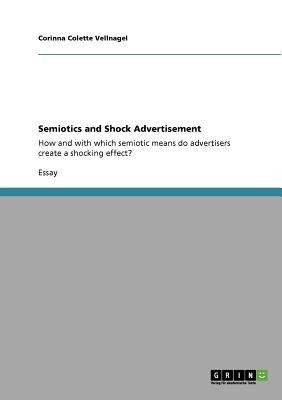
- We will send in 10–14 business days.
- Author: Corinna Colette Vellnagel
- Publisher: GRIN Verlag
- ISBN-10: 3640836456
- ISBN-13: 9783640836451
- Format: 14.8 x 21 x 0.4 cm, softcover
- Language: English
- SAVE -10% with code: EXTRA
Reviews
Description
Essay from the year 2011 in the subject Communications - Public Relations, Advertising, Marketing, Social Media, grade: Excellent, The University of Surrey (Department of English), course: Language of Advertising, language: English, abstract: There is advertisement - and there is advertisement: Most ads have the intention to make people aware of a product, service or concept followed by the purchase and therefore "support the free-market economy" (Reschke: 1998, p. 1); but there are ads whose main aim is to inform people, more precisely to call their attention to a certain topic. Consequently, advertisements cause different reactions: Some ads make people smile or even giggle; some just communicate plane information; whilst others make people think and reflect; and again others literally shock people. Advertising campaigns such as the WWF 9/11 one, the "Get unhooked" ads or Antonio Federici's banned campaign (q.v. Appendix 1-3) are only three examples on the list of campaigns banned in the 21st century due to unethical content. Those offensive advertisements include "messages that transgress laws and customs (e.g. anti-human rights), breach a moral or social code (e.g. profanity, vulgarity) or outrage the moral or physical senses (e.g. gratuitous use of violence, use of disgusting images)" (Chan et al.: 2007, p. 608). Researchers found out that adverts, which "are incongruent with social norms attract attention and are more likely to be retained in memory" (Gulas and Weinberger: 2006, p. 173). Attracting interest can be done on different ways: by either using attention attracting pictures, sounds, signs or just simple words and phrases.
EXTRA 10 % discount with code: EXTRA
The promotion ends in 20d.19:23:31
The discount code is valid when purchasing from 10 €. Discounts do not stack.
- Author: Corinna Colette Vellnagel
- Publisher: GRIN Verlag
- ISBN-10: 3640836456
- ISBN-13: 9783640836451
- Format: 14.8 x 21 x 0.4 cm, softcover
- Language: English English
Essay from the year 2011 in the subject Communications - Public Relations, Advertising, Marketing, Social Media, grade: Excellent, The University of Surrey (Department of English), course: Language of Advertising, language: English, abstract: There is advertisement - and there is advertisement: Most ads have the intention to make people aware of a product, service or concept followed by the purchase and therefore "support the free-market economy" (Reschke: 1998, p. 1); but there are ads whose main aim is to inform people, more precisely to call their attention to a certain topic. Consequently, advertisements cause different reactions: Some ads make people smile or even giggle; some just communicate plane information; whilst others make people think and reflect; and again others literally shock people. Advertising campaigns such as the WWF 9/11 one, the "Get unhooked" ads or Antonio Federici's banned campaign (q.v. Appendix 1-3) are only three examples on the list of campaigns banned in the 21st century due to unethical content. Those offensive advertisements include "messages that transgress laws and customs (e.g. anti-human rights), breach a moral or social code (e.g. profanity, vulgarity) or outrage the moral or physical senses (e.g. gratuitous use of violence, use of disgusting images)" (Chan et al.: 2007, p. 608). Researchers found out that adverts, which "are incongruent with social norms attract attention and are more likely to be retained in memory" (Gulas and Weinberger: 2006, p. 173). Attracting interest can be done on different ways: by either using attention attracting pictures, sounds, signs or just simple words and phrases.


Reviews